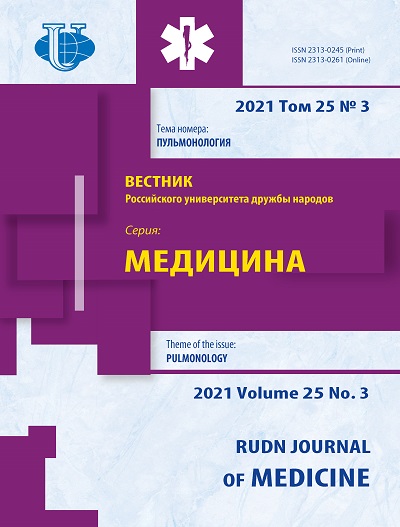Nursing awareness of oxygen therapy among nurses at selected district hospital in Nepal
- Authors: Katel K.1, Gurung S.1, Gautam S.1, Bhattrai M.1
-
Affiliations:
- Gandaki Medical College Teaching Hospital and Research Center
- Issue: Vol 25, No 3 (2021): PULMONOLOGY
- Pages: 202-208
- Section: PULMONOLOGY
- URL: https://journals.rudn.ru/medicine/article/view/27536
- DOI: https://doi.org/10.22363/2313-0245-2021-25-3-202-208
Cite item
Full Text
Abstract
Relevance . Oxygen therapy is commonly used in the emergency and critical cases which is the first line treatment in many critical conditions. Oxygen therapy is a medical treatment prescribed mainly for hypoxic patients, which provides oxygen at higher concentrations than that found in atmosphere (>21%). Oxygen administering depends on the needs of the patients’ conditions and in some cases medical treatment. The present study aims to assess the level of awareness on oxygen therapy among nurses and examine the association between level of knowledge, attitude and selected socio-demographic variables. Materials and Methods . A quantitative descriptive cross-sectional study design was used. A non-probability purposive sampling technique was used to select 125 samples. The data were collected for 6 weeks using a semi-structured self-administered questionnaire. Descriptive statistics (frequency, percentage, mean, standard deviation) was used for quantitative data analysis and inferential statistics (chi-square) were used to find out the association between level of knowledge, attitude and selected socio-demographic characteristics of the respondents. Results and Discussion . The study revealed that 74.4% of the nurses had unsatisfactory level of knowledge, 20% had average knowledge and 5.6% had satisfactory level of knowledge regarding oxygen therapy. A significant association was found between the knowledge level and age, educational status and experience of the respondents (p=0.001, 0.000, 0.016). Conclusion . The study concluded that the level of knowledge among nurses regarding oxygen therapy has lower than expected and is unsatisfactory. The results of the study can provide a framework for the healthcare policymakers to develop and implement educational programs on oxygen therapy for nurses in hospital setting.
Keywords
About the authors
Kalpana Katel
Gandaki Medical College Teaching Hospital and Research Center
Author for correspondence.
Email: katelkalpana@gmail.com
ORCID iD: 0000-0002-1615-4261
Pokhara, Nepal
Sunita Gurung
Gandaki Medical College Teaching Hospital and Research Center
Email: katelkalpana@gmail.com
ORCID iD: 0000-0001-6981-8351
Pokhara, Nepal
Srijana Gautam
Gandaki Medical College Teaching Hospital and Research Center
Email: katelkalpana@gmail.com
ORCID iD: 0000-0001-6213-0968
Pokhara, Nepal
Muna Bhattrai
Gandaki Medical College Teaching Hospital and Research Center
Email: katelkalpana@gmail.com
ORCID iD: 0000-0002-0117-4788
Pokhara, Nepal
References
- Victor K, Joshua O, Benditt, Robert A, Wise and Amir S. Oxygen Therapy in Chronic Obstructive Pulmonary Disease. Proceedings of the American Thoracic Society. 2008; 5(4):513-518.
- World Health Organization (WHO). Essential medicines and health products: WHO Model Lists of Essential Medicines. Geneva: WHO. 2016; 33-47. (Accessed March 03, 2021)
- Adipa FE, Aziato I and Zakariah AN. Qualitative exploration of nurses’ perspectives on clinical oxygen administration in Ghana. International Journal of Africa Nursing Sciences. 2015; 2:42-46.
- Kelly CA and Michelle M. How do healthcare professional perceive oxygen therapy. A critical interpretative synthesis of the literature. 2015; Available at: http://journals.sagepub.com/doi/abs/10.1177/1479972314562408.
- Sobek, J. (2017). What occurs when Oxygen saturation levels are high? Available at: Healthfully, http://healthfully.com/occursoxygen-saturation-levels-high-8396737.html. 27 July 2017
- Burton MA, Ludwig LJ. Fundamentals of nursing care: concepts, connections & skills. FA Davis; 2014 Oct 10.
- Pasalioglu KB, Kaya H. Catheter indwell time and phlebitis development during peripheral intravenous catheter administration. Pakistan journal of medical sciences. 2014 Jul;30(4):725.
- Alberta Health Services. Oxygen Therapy for Acute Adult Inpatients. Allied Health Services. 2016;1-60.
- Lemma G and A Weldetsadik. Assessment of nurses knowledge, attitude and practice about oxygen therapyatemergency department. 2015; 28-34.
- Browne B and Crocker C. Guidelines for the Administration of oxygen in adults. Nottingham University Hospital. 2013; 11-18.
- Eastwood GM, Reade MC, Peck L, Baldwin I, Considine J, Bellomo R. Critical care nurses’ opinion and self-reported practice of oxygen therapy: A survey. Australian Critical Care. 2012; 25(1):23-30.
- Baker T. Critical care in low-income countries. Tropical Medicine & International Health. 2009;14(2)143-148.
- Linto MT et al. Assessment of nurses’ knowledge, attitude and practice about oxygen therapy in emergency and icu departments of orotta national referralhospital. International Journal of Medicine and Health Profession Research. 2019; 6(1):102-111.
- Ghebremichael FG, Thomas LM, Yohannes A, Kesete KY, Wolday SJ, Ghebrewoldi FH, Mengstu HT, Kuriakose A. International Journal of Medicine and Health Profession Research.
- Weldetsadik AS. Assessment of nurse’s knowledge, attitude and practice about oxygen therapy at emergency departments of one federal and three regional hospitals in Addis Ababa, Ethiopia. 2015.
- Demirel H, Erek Kazan E. Knowledge levels of nurses about oxygen therapy in Turkey. International Journal of Health Services Research and Policy. 2020; 5(1): 1-14
- Uwineza Didi V. Knowledge, attitudes and practice among nurses toward oxygen administration to the critically ill patients at UTHK (Doctoral dissertation, University of Rwanda).
















